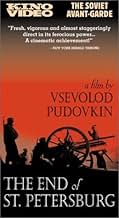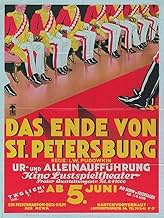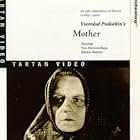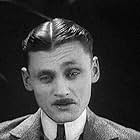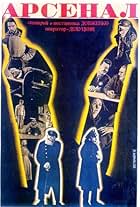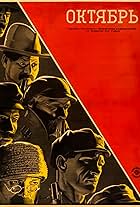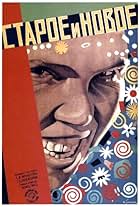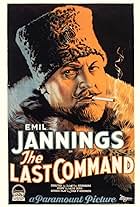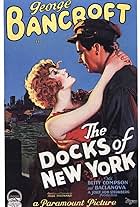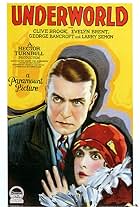Soviet film directors Vsevolod Pudovkin and Sergei Eisenstein had a somewhat friendly rivalry. The two would sit down to a cup of tea and discuss the merits of each other's works and how they incorporated montage, the main editing style for the USSR filmmakers, into their movies. The Central Committee of the Communist Party awarded these two leading Soviet directors cash to produce separate films celebrating the 10th anniversary of the Bolsheviks' takeover of the Russian government in 1917.
Pudovkin emerged first with his December 1927's "The End of St. Petersburg." The movie, concentrating on the years 1913 through 1917, solidified his reputation as the premier filmmaker in Soviet cinema. Pudovkin favored the melodramatic over the more formalistic style of his country's cinematic colleagues. His earlier 1926 "Mother" hit all the sentimental notes of a bonafide weepy despite its propagandist angle. Pudovkin continued his focus on the individual in "The End of St. Petersburg" by following a farmer's son who goes to the big city to seek employment. He gets a job at a smokey, unhealthy factory where he listens to a co-worker with Communist leanings espousing ideas to reform the government by giving the workers more rights. Our farmer boy ends up in a fistfight, is arrested and sent to the front lines of World War One.
Pudovkin cross-cuts between the battle's insanity of bloody carnage with stock brokers who see the market ascending by the government's outrageous expenditures to support the costly war. The more Czar Nicholas spends on armaments, the more those military businesses make profits. Calling his cinematic technique "parallelism," or relational montage, Pudovkin drew stark contrasts between those benefiting from the conflict and those who died gruesome deaths because of capitalistic greed. The juxtaposition between the two worlds justify the Bolsheviks' reasons to stop the war, according to "The End of St. Petersburg." The Reds stopped the carnage as well as nationalized Russia's big greedy corporations because their owners could only think of think of huge profits in the midst of unnecessary deaths.
Pudovkin's final images are of the worker's wife carrying an empty food pail that reflects the populace's dire poverty. She's seen walking through the splendor of the Tsar's Winter Palace, where untold millions of rubles were spent on such opulence in the face of starvation just outside its gates. "The End of Petersburg" projects a full-hearted endorsement of the sacrifice the overthrow of the Czar had cost in human lives. But Pudovkin gives a near guarantee in his images the revolutionary promises by the Bolshevik leaders will be kept.
"The End of St. Petersburg" was the second film in what is regarded as Pudovkin's great trilogy celebrating the 1917 revolution overthrowing the crown and pays homage to the form of government Karl Marx would have been proud. But it is the Russian's cinematic skills in editing, cinematography and narrative threads that give excitement to modern film scholars the reason to continue to study his influential techniques.




